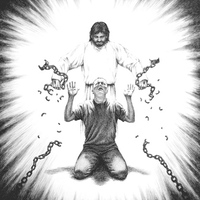Sigh huh as in word's of fellow Bro-Brother, just ANOTHER Son of Adam & Eve, Alan Dutch Schaefer (ie: Terminator Arnold), 'if it bleeds' ie: RED bloody static snow on TV-adult human flies-locust on solid waste, crap 4 brain's = Klaus Martin Schwab, Gyorgy Schwartz = George Soros & etc ELSE of Deep State, Trilateral Commission, Bilderberg Group, annual meetup Davos human rats, Globalists-Elites, literally CEASE immediately onsite (ie: Holy retributionary housecleaning versus past The Flood ie: Holy Bible's Noah & THAT of S & G via Holy Bible's Genesis 19) these dust & ash corpse's already & send THEM ALL (fill in blank's) upon THEIR knees B4 Jesus 4 THEIR individual PRE judgment Day processing as-that we ALL of 'capable' adult's past-2 date were SUPPOSE 2 B doing-amidst thus ALL this exhibited out there USA-globally could-should have been-B avoided aside from daily locally wherever U-ANY live locally USA-globally = SELF deny care taking of each other of innocence NO matter 1's race NOR where 1's from & THAT (care taking) of non human innocent original 5 day created Earth, NOTHING off (Earth)!
People
Circles
Posts
THEY: Deep State, Trilateral Commission, Bilderberg Group, annual meetup Davos human rats, Globalists-Elites, George Soros & vast & various Syndicates R NOT ANY who I fear, it's the Holy retributionary wrath of God if I B as U majority 8 billion + ALL R, I'm NOT going 2 Hell 4 U! & 4 ALL the misusage of Behavioral Analysis profiling id skills via Deep State's FBi-CiA-NSA, etc = THEY (?) answering 2 Liberals-George Soros-Klaus Schwab, etc = B-ing SELF $ sold out human dust-ash corpse TOOLS until NOT Coming needed NO more, how much U-WE ALL? GET it STUPID?!
Klaus Martin Schwab, Gyorgy Schwartz = George Soros, terrorist's Hamas, isis & etc ELSE of bullies in a classroom USA-globally (sickened human screaming animals 2 B out outta they misery)-evil-unholy, weeds of garden, dust & ash adult corpse's, & whether of Deep State, Trilateral Commission, Bilderberg Group, annual meetup Davos human rats, Globalists-Elites, the LEFT, LGBTQiA & vast & various fill in the blank's of Syndicates & Cabal's NEED 2 SERIOUSLY, LITERALLY DIE, NO investigations, NO judges-courts, NO prisons = JUST LITERALLY CEASED human weeds of & amidst a garden which is ALL our home: non human innocent Earth, 4EVER HAIL King Jesus - https://www.youtube.com/watch?v=pX3lfOs0ggM
Videos
“He’s not leaving ... he’s putting his wife as the public face + then he’s going into the back room to sort of engineer things.” — Catherine Austin Fitts, The Solari Report
Watch the WHOLE revealing episode with Catherine Austin Fitts on #CHDTV ?
https://live.childrenshealthdefense.org/chd-tv/shows/good-morning-chd/take-action-now/
On this episode of The M.O., host Manila Chan dives into the topic of global elites and their macro economic and political influence on the world stage. In particular, Manila focuses on Klaus Schwab, whose shady role as head of the World Economic Forum has put him at the forefront of international influence. Manila speaks to economist Patrick Wood about Schwab and others like him who continue to attend and influence world conferences.
Join Liam Sturgess for a deep dive on the recent "Void Typhoon" Chinese hack on critical American infrastructure, and explore what it means for the future of cybersecurity.
Show notes: https://liamsturgess.substack.com/p/public-private-cybersecurity
---
Find me at https://www.liamsturgess.com/
Join my Locals community for supporters-only content: https://liamsturgess.locals.com/
Subscribe to Microjourneys on Substack: https://liamsturgess.substack.com/
Buy Me a Coffee: https://www.buymeacoffee.com/liamsturgess
Follow me on all my platforms:
Rumble: https://rumble.com/c/liamsturgess
Bandcamp: https://www.liamsturgess.bandcamp.com/
Odysee: https://odysee.com/@LiamSturgess:1
Sovren: https://sovren.media/u/liamsturgess/
BitChute: https://www.bitchute.com/channel/bs1rJ76ek0Vp/
Brighteon: https://www.brighteon.com/channels/liamsturgess
YouTube: https://www.youtube.com/@LiamSturgess
Twitter: https://www.twitter.com/TheLiamSturgess/
People
Circles
Videos
“He’s not leaving ... he’s putting his wife as the public face + then he’s going into the back room to sort of engineer things.” — Catherine Austin Fitts, The Solari Report
Watch the WHOLE revealing episode with Catherine Austin Fitts on #CHDTV ?
https://live.childrenshealthdefense.org/chd-tv/shows/good-morning-chd/take-action-now/
On this episode of The M.O., host Manila Chan dives into the topic of global elites and their macro economic and political influence on the world stage. In particular, Manila focuses on Klaus Schwab, whose shady role as head of the World Economic Forum has put him at the forefront of international influence. Manila speaks to economist Patrick Wood about Schwab and others like him who continue to attend and influence world conferences.
Join Liam Sturgess for a deep dive on the recent "Void Typhoon" Chinese hack on critical American infrastructure, and explore what it means for the future of cybersecurity.
Show notes: https://liamsturgess.substack.com/p/public-private-cybersecurity
---
Find me at https://www.liamsturgess.com/
Join my Locals community for supporters-only content: https://liamsturgess.locals.com/
Subscribe to Microjourneys on Substack: https://liamsturgess.substack.com/
Buy Me a Coffee: https://www.buymeacoffee.com/liamsturgess
Follow me on all my platforms:
Rumble: https://rumble.com/c/liamsturgess
Bandcamp: https://www.liamsturgess.bandcamp.com/
Odysee: https://odysee.com/@LiamSturgess:1
Sovren: https://sovren.media/u/liamsturgess/
BitChute: https://www.bitchute.com/channel/bs1rJ76ek0Vp/
Brighteon: https://www.brighteon.com/channels/liamsturgess
YouTube: https://www.youtube.com/@LiamSturgess
Twitter: https://www.twitter.com/TheLiamSturgess/
We are in a very interesting yet equally terrifying point in our history, where the-powers-that-wish-they-were are seemingly marshaling all their efforts to drive the population into a technocratic control structure from which we can never return. And the reason I say this is an "interesting" time, and not just terrifying, is due to the fact that never before has the agenda been this laid bare, and never before has the population had the hard verifiable data to confirm for themselves that this indeed happening. It is all there in front of us, not opinion, but stated record, documents, planning, and open execution. I created this short video montage, on the clear technocratic path that is being aggressively formed right in front of us, in the hopes that it can reach those in the world who just need to see it for themselves. Moreover, I hope that those who see why this is important will carry on researching and sharing what they find with the world. #QuestionEverything #TheLastAmericanVagabond
All Video Source Links Can Be Found Here At The Last American Vagabond: https://www.thelastamericanvagabond.com/comirnaty-illusion-transgender-psyop-east-palestine-a-lot-more-compilation-show
Want to send a check to support TLAV, or just words of encouragement?
Use our new P.O. box:
Ryan Cristian
1113 Murfreesboro Rd. Ste 106-146
Franklin, Tn 37064
Get a TLAV "Question Everything" T-Shirt or Sticker at:
https://truthclothing.io/collections/tlav
Support TLAV through Autonomy:
Join Autonomy:
https://www.universityofreason.com/a/29887/QZmKjVCA
Ryan Cristián’s Objectivity Course:
https://marketplace.autonomyagora.com/objective-research
Richard Grove’s Course:
https://www.universityofreason.com/a/2147526145/QZmKjVCA
Like What You See? Help Us Stay People Funded:
https://tlavagabond.substack.com/
https://www.thelastamericanvagabond.com/donations/donation-form/
https://www.subscribestar.com/the-last-american-vagabond
https://cash.app/$TLAVagabond
https://www.buymeacoffee.com/tlavagabond
Bitcoin Donations: 3HybuDuvH4x5uJHemgc7EW4ms2nz3F8Gah
Ethereum Donations: 0x5e68B8984d9D8167dAf890588a7037Ae6Cc87d4b
Litecoin Donations: MX3T2kYvzfD4mNS4VNSyXFgY4abhUJC5ff
Bitcoin Cash Donations: qqsef23980qu5nlk2dj7s7ezwedl4fmy2gl2mxp9dp
Support The Last American Vagabond by Subscribing here:
http://www.feedblitz.com/f/?Sub=906867
The Last American Vagabond Links:
Sovern: https://sovren.media/u/tlavagabond/
Rumble: https://rumble.com/user/TheLastAmericanVagabond
Odysee: https://odysee.com/@TLAVagabond:5
Rokfin: https://www.rokfin.com/TLAVagabond
Minds: https://www.minds.com/TLAVagabond
Bitchute: https://www.bitchute.com/channel/24yVcta8zEjY/
Telegram: https://t.me/TLAVagabond
VK: https://vk.com/id504366611
Twitter: https://twitter.com/TLAVagabond
Instagram: https://www.instagram.com/the_last_american_vagabond/
TikTok: https://www.tiktok.com/@thelastamericanvagabond
Parler: https://parler.com/TLAVagabond
Getter: https://gettr.com/user/tlavagabond
TruthSocial: https://truthsocial.com/@TLAVagabond
Locals: https://thelastamericanvagabond.locals.com/
Facebook: https://www.facebook.com/Vagabond-Censored-103475109010293/
Memo: https://memo.cash/profile/1Np4Z2d25RSsQi99gKhf2cd5CAwN57jk13
MeWe: https://mewe.com/profile/5bcfb5d2a5f4e5420d7d5a2f
Bastyon: https://bastyon.com/tlavagabond
Flote: https://flote.app/LastAmericanVagabond
"Copyright Disclaimer Under Section 107 of the Copyright Act 1976, allowance is made for "fair use" for purposes such as criticism, comment, news reporting, teaching, scholarship, and research. Fair use is a use permitted by copyright statute that might otherwise be infringing. Non-profit, educational or personal use tips the balance in favor of fair use.”
Check out my latest song, Break the Great Reset! And be sure sign sign up on my email to be notified when the music video campaign launches on Indiegogo at: https://www.indiegogo.com/projects/break-the-great-reset-official-music-video/coming_soon
Yes prease! ^^
Produced by VonViddy. Lyrics by Jack Lloyd.
#greatreset #wef #worldeconomicforum #libertarian #klausschwab
Posts
Sigh huh as in word's of fellow Bro-Brother, just ANOTHER Son of Adam & Eve, Alan Dutch Schaefer (ie: Terminator Arnold), 'if it bleeds' ie: RED bloody static snow on TV-adult human flies-locust on solid waste, crap 4 brain's = Klaus Martin Schwab, Gyorgy Schwartz = George Soros & etc ELSE of Deep State, Trilateral Commission, Bilderberg Group, annual meetup Davos human rats, Globalists-Elites, literally CEASE immediately onsite (ie: Holy retributionary housecleaning versus past The Flood ie: Holy Bible's Noah & THAT of S & G via Holy Bible's Genesis 19) these dust & ash corpse's already & send THEM ALL (fill in blank's) upon THEIR knees B4 Jesus 4 THEIR individual PRE judgment Day processing as-that we ALL of 'capable' adult's past-2 date were SUPPOSE 2 B doing-amidst thus ALL this exhibited out there USA-globally could-should have been-B avoided aside from daily locally wherever U-ANY live locally USA-globally = SELF deny care taking of each other of innocence NO matter 1's race NOR where 1's from & THAT (care taking) of non human innocent original 5 day created Earth, NOTHING off (Earth)!
THEY: Deep State, Trilateral Commission, Bilderberg Group, annual meetup Davos human rats, Globalists-Elites, George Soros & vast & various Syndicates R NOT ANY who I fear, it's the Holy retributionary wrath of God if I B as U majority 8 billion + ALL R, I'm NOT going 2 Hell 4 U! & 4 ALL the misusage of Behavioral Analysis profiling id skills via Deep State's FBi-CiA-NSA, etc = THEY (?) answering 2 Liberals-George Soros-Klaus Schwab, etc = B-ing SELF $ sold out human dust-ash corpse TOOLS until NOT Coming needed NO more, how much U-WE ALL? GET it STUPID?!
Klaus Martin Schwab, Gyorgy Schwartz = George Soros, terrorist's Hamas, isis & etc ELSE of bullies in a classroom USA-globally (sickened human screaming animals 2 B out outta they misery)-evil-unholy, weeds of garden, dust & ash adult corpse's, & whether of Deep State, Trilateral Commission, Bilderberg Group, annual meetup Davos human rats, Globalists-Elites, the LEFT, LGBTQiA & vast & various fill in the blank's of Syndicates & Cabal's NEED 2 SERIOUSLY, LITERALLY DIE, NO investigations, NO judges-courts, NO prisons = JUST LITERALLY CEASED human weeds of & amidst a garden which is ALL our home: non human innocent Earth, 4EVER HAIL King Jesus - https://www.youtube.com/watch?v=pX3lfOs0ggM
'Age' (2 date's Time period) Of Loneliness? Huh MORE like the age of literal COWARDS, with the so called WE THE PEOPLE-'MORE of' (us, USA-globally capable adults excluding disabled & Jesus's Little Heaven supported innocent 1's ie: kids-children) against THEM: Klaus Martin Schwab, Gyorgy Schwartz = George Soros & etc ELSE of Deep State, Trilateral Commission, Bilderberg Group, annual meetup Davos human rats, Globalists-Elites & vast & various Syndicates NEED 2 literally DIE ALREADY, 4 REALS - https://www.youtube.com/watch?v=APW_QwzGg2o
WSJ accuses Klaus Schwab, WEF of sexual harassment and discrimination against blacks
https://newstarget.com/2024-07-07-wsj-accuses-schwab-wef-of-sexual-harassment.html

The Wall Street Journal has recently published an article exposing the World Economic Forum and its octogenarian founder Klaus Schwab of sexual harassment and discrimination against blacks in the workplace. Under Schwab’s administration, WEF has reportedly allowed an atmosphere hostile to women and Black people in its workplace, according to internal complaints, email exchanges and […]
www.newstarget.com
















